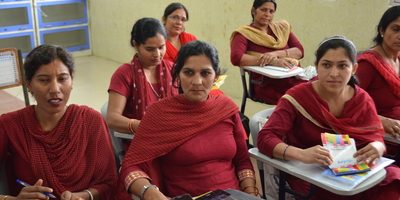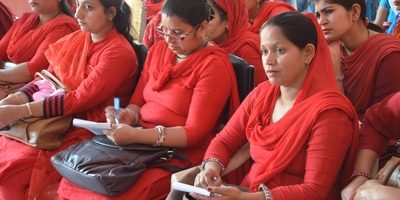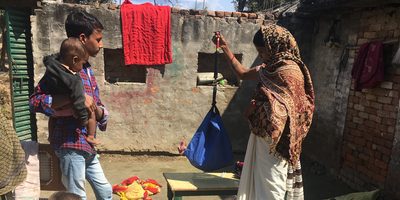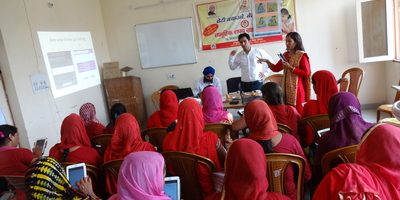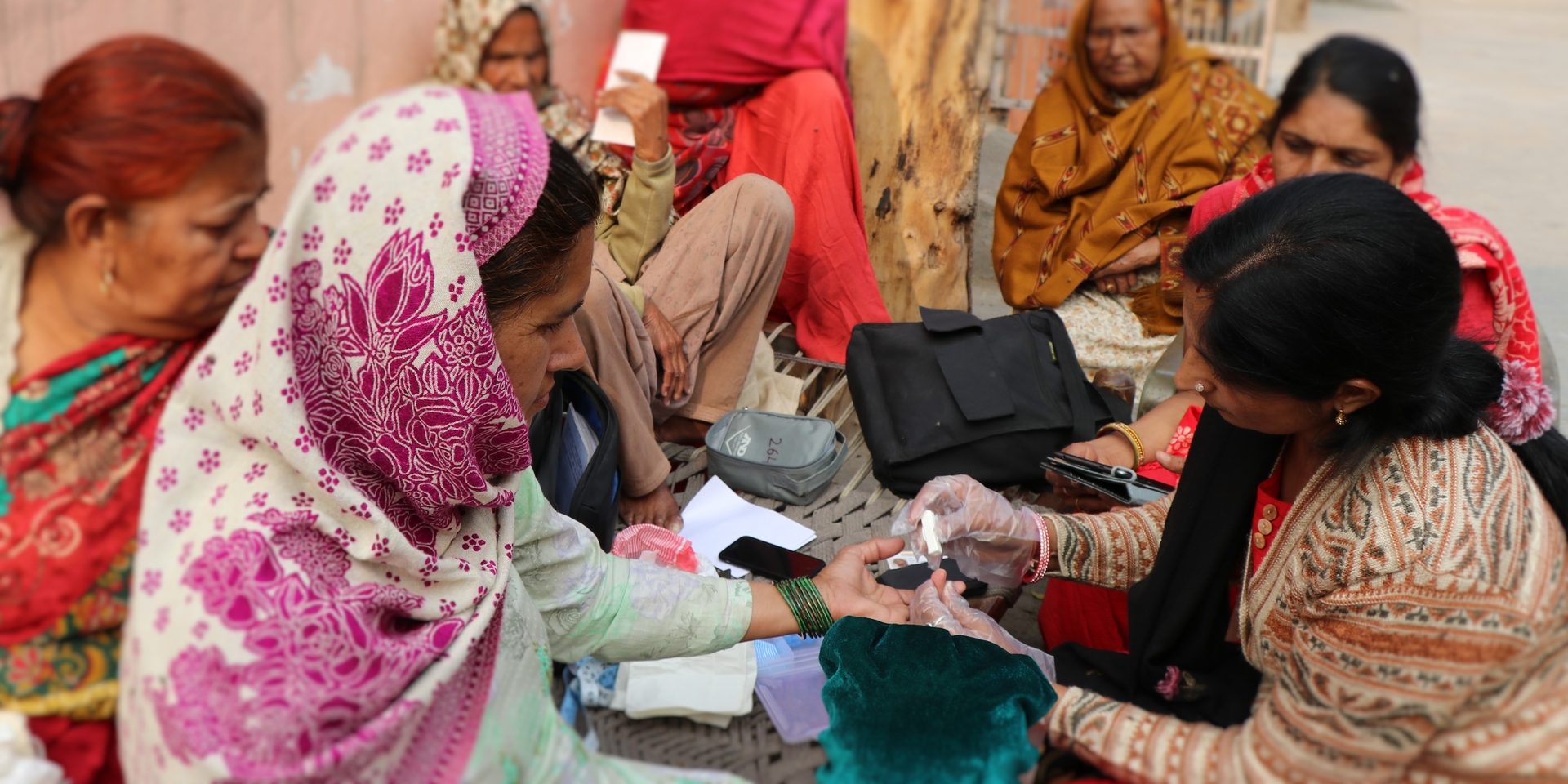
Paradigm shifts in Community Health Worker roles to address Non Communicable Diseases
Authored by Dr Rajani Ved, Distinguished Fellow, Thought leadership program, The George Institute
Could a shift in roles for the one million Community Health Workers (called ASHAs), be the solution to India's health care crisis?
This piece, based on policy and programme experience of the ASHA programme, reflects on the changing nature of requirements of community health workers beyond maternal and child health, the challenges that can be anticipated and the potential design solutions that are possible. It identifies six key paradigm shifts that are likely to be needed for ASHAs to transition to community level care for NCDs.
To provide context, non-communicable diseases such as diabetes, stroke, heart disease and kidney disease have emerged as the leading causes of death globally. This is especially true of low and middle income countries including India. However health systems in India, as in other low and middle income countries have been focused on meeting reproductive and child health needs. Given the epidemiological and demographic transition, there is a need to incorporate chronic disease management as well.
Like elsewhere, we need to find appropriate and context-specific ways to address this challenge. One possible approach could be India’s National Health Mission, a fourteen year, health system reform effort that has added nearly one million Community Health Workers, called ASHAs to assist in mobilizing and engaging communities in health care.
Community health worker programmes have proved that they are beneficial in addressing issues of survival, improved health outcomes, and last mile delivery issues. However, the evidence on the effectiveness of their interventions in India and other low and middle income countries is based largely on their roles in maternal, new-born, child health, nutrition and infectious diseases programmes. This is not entirely surprising given that large scale community health worker programmes were developed and matured in contexts with poor maternal and child health indicators.
While the experience of large scale, long standing community health worker programmes designed for and implemented in the context of weak reproductive and child health indicators including or transitioning to care for chronic diseases is yet to be documented, evidence on the role of community health workers in non-communicable disease management is beginning to emerge, in developed countries and some low and middle income countries.
Key paradigm shifts are likely to be needed for ASHAs to transition to community level care for NCDs.
1. Expanding coverage of population sub groups: ASHAs, by and large, cover a population of 500 to 1500, in which they live and are expected to reach all pregnant women, new-borns, and children under five for targeted interventions related to MNCHN through home visits and listing of beneficiaries. To address NCDs, they will now need to mobilize both women and men beyond thirty years of age for screening, prevention and control. Both these categories of people are currently out of the purview of the ASHAs tasks. Reaching men, particularly, is likely to pose a challenge given gender sensitivities in most parts of India. Context specific interventions such as adding a male health worker and greater involvement of male members of community health collectives will need to be attempted.
2. Moving from episodic care to long-term follow up: ASHAs are expected to reach pregnant women, starting from early registration to enabling safe delivery, and undertake post-natal and new-born visits. For children under five they are expected to ensure full immunization, deworming, iron supplementation and provide care for illness. The intervention component is mostly limited to predefined contact visits, focused on a few activities, except for emergency calls for assistance with sick newborns and children and referral. For NCDs on the other hand, ASHAs will need to ensure periodic screening, enable monthly visits for those with any disease, ensure treatment adherence for the individual patient, undertake community level awareness activities, and facilitate longitudinal care. This has implications on the amount of time the ASHA can spend, and will require serious policy considerations on adding an additional health worker or increasing the amount of time spent by a single ASHA or adding a full time community health workers.
3. Increase in task complexity: Involvement with MCH related tasks, also relate to events with which ASHAs are familiar with, having experienced childbearing and involved in child rearing roles themselves. ASHAs when they were selected in 2005, did not require educational qualifications beyond eight years of schooling, and in many instances this was relaxed to allow for local women to become ASHAs. With their involvement in NCDs, ASHAs will need high quality training to expand knowledge and skills and ongoing mentoring to community level interventions related to the metabolic, biologic and behavioural factors related to NCDs. This calls for enabling ASHAs to attain educational equivalence of at least high school, or investment in high quality training programmes of sufficient duration, to address the needs of low literate ASHAs.
4. Enabling care continuum: The role of ASHA and community health workers in LMIC globally, is limited to community action with linkage to primary and secondary health facilities as a provider of community level care, a facilitator to improve access to services, and community mobilization. Their involvement in transitioning to care for NCDs will require understanding support for patient navigation in secondary and tertiary facilities, community action to advocate for lifestyle change, ensure access and adherence to treatment, and build networks of patient support groups. This will require substantial mentoring and handholding through dedicated supervisors and an increase in remuneration.
5. Adopting digital technology: Hitherto ASHAs were not expected to maintain records, beyond a daily diary to record the names of mothers and children due for services related to MNCHN. In order to ensure care continuum for individual patients with NCDs, tracking services accessed at various facility levels, medication/treatment advice and follow up requires functioning IT systems, access to internet, supply of equipment, troubleshooting and capacity building of ASHAs and supervisors at every level.
6. Maintaining activist role: The role of the ASHA for maternal and child health includes community mobilization particularly a focus on the poor and vulnerable, access to entitlements, including free medicines and diagnostics. Care for chronic diseases on the other hand, requires increased awareness among ASHAs in terms of knowledge on available entitlements, including social protection schemes for secondary and tertiary hospitalization and the skills to be able to disseminate this understanding in communities so that moral hazards of over hospitalization are avoided. The mechanisms to empower ASHAs with this knowledge and commensurate support for ASHAs demanding entitlements for their communities are still at a very nascent stage.
Conclusion
The role outlined for ASHAs in India, as part of recent Primary Health Care reforms takes into consideration programme design features and implementation lessons over the past decade and half. It is clear however that these paradigm shifts cannot be accomplished without changes in service delivery reorganization, modifying institutional frameworks at state and district levels, creating the systems for technical and management competencies and designing newer incentives. Such shifts are also likely to occur in countries where community health workers have evolved in a context such as in India. Research is also needed to study the evolution of mechanisms for care coordination that overcome traditional silos and support teamwork and the enabling or disempowering effect of myriad new digital technologies for community health workers so to bring evidence to enable effective care coordination and integration. The re-design should ensure that existing structures are not overwhelmed but strengthened as a result of such an expansion.
About the author
Dr Rajani Ved is a Distinguished Fellow at The George Institute for Global Health, focusing on Women's Health Equity and Transforming Health Systems. Dr Ved is a medical doctor with public health training and is also the Executive Director, National Health Systems Resource Centre in New Delhi, India.


